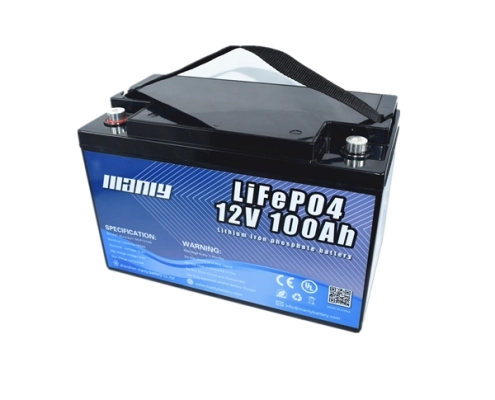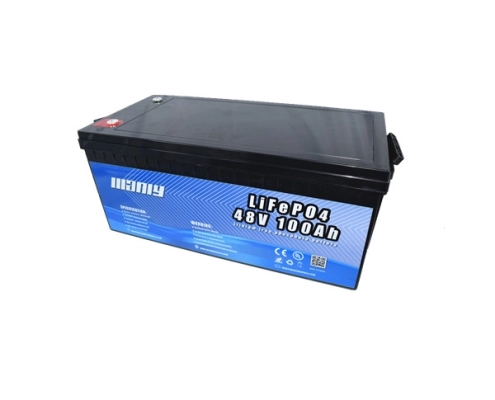Longevity of Marine Battery: A Guide
Table of Contents
- Longevity of Marine Battery: A Guide
- How Long Can You Expect Your Boat’s Battery to Last
- Unveiling the Longest Lasting Marine Batteries for Your Boat
- Marine Battery Types: Which One Is Right for You?
- Boat Battery Maintenance: Ensuring Long-Term Performance
- Marine Battery Voltage: The Quick-Start Guide for Boaters
- Demystifying Marine Battery Sizes
- When to Replace Your Marine Battery
- The Right Way to Charge Your Marine Battery
- Cold-Weather Marine Battery Care
- Keep Your Marine Battery Lasting Longer
- Is Upgrading to a Lithium Marine Battery Worth It?
- Choose Lasting Power: MANLY Marine Batteries
- Conclusion
- Learn More About Battery
Embarking on the open waters calls for an unshakable reliance on your vessel’s heart – the marine battery. A beacon of power for every seafarer, the marine battery stands as the silent sentinel that breathes life into your boating adventures. Understanding the longevity and care of your boat battery is not just practical; it’s pivotal. From the rush of energy needed to wake the engine to the sustaining pulse required to keep the lights on, your choice in a marine battery defines the seamlessness of your journey. This guide casts a spotlight on the lifespan of various marine battery types, from traditional lead-acid to the advanced lithium, and dives into the essentials of maintenance that stretch their vitality. So, as we set our sails towards the horizon of battery knowledge, let’s chart the course for a reliable and enduring boating experience.
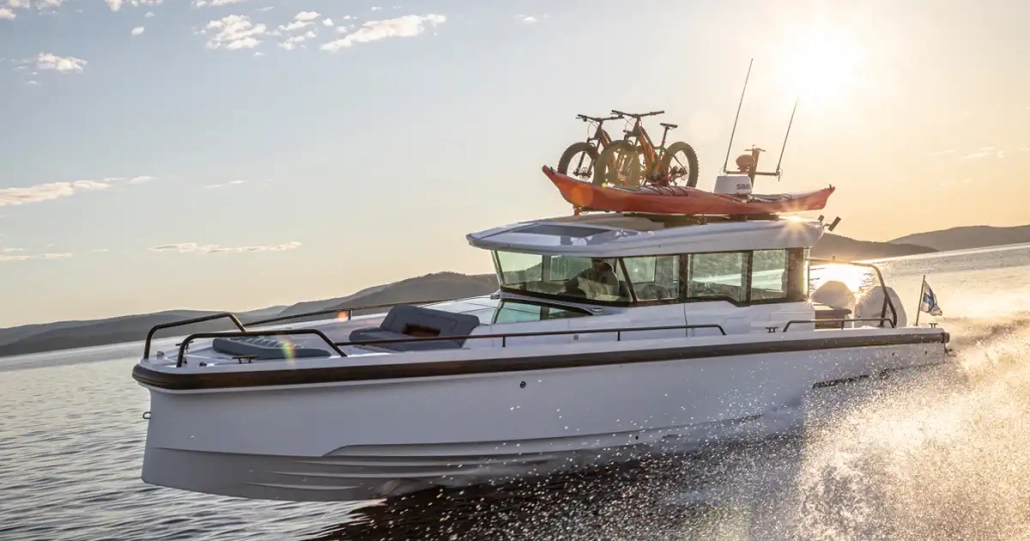
How Long Can You Expect Your Boat’s Battery to Last
Ever wonder how long your boat’s battery might last? Well, it can vary, but let’s look at some rough ideas.
For starters, the kind of battery you have matters a lot. If you’ve got a standard 12-volt for cranking up the motor, you’re looking at about 5 to 10 years of life. These guys are like sprinters—they give you a quick energy burst. After that, the engine’s job is to recharge them. Now, if you’re using your boat a lot, your battery won’t last as long.
The batteries that power everything else on your boat? They usually make it from 2 to 5 years. They work harder, which can wear them out quicker. But if you decide to go for the fancy lithium kind, you could be set for up to 20 years, even if you’re out on the water all the time.
Unveiling the Longest Lasting Marine Batteries for Your Boat
When you’re out at sea, the right battery makes all the difference. Lithium iron phosphate batteries take the lead, especially for deep-cycle needs like running your boat’s appliances. They pack a powerful punch and last way longer than lead-acid types — we’re talking up to ten times more life. And for starting up your engine, AGM or gel batteries are your go-to. They give you that quick jolt of energy reliably. Just remember, if you want them to last, don’t run them down too much.
Marine Battery Types: Which One Is Right for You?
When picking a marine battery, it’s like choosing a trusty friend for your boat. Let’s dive into the different kinds you might find!
Lead-Acid Batteries: The Budget-Friendly Choice
These are your wallet’s best pal but need a bit more TLC. They don’t cost much and you can charge them up a bunch of times. Yet, you gotta keep an eye on their water levels and be careful they don’t spill and harm sea critters. They can stick around with you for about 2 to 5 years.
AGM Batteries: The Low Maintenance Companion
AGM batteries are great if you don’t want to fuss over your battery. They keep their cool, not leaking easily, and they’re chill without much upkeeping. They’re pricier, though, and once they get hurt, it’s often easier to get a new one than to try fixing it. Expect these buddies to last from 4 to 7 years.
Gel Batteries: The Slow and Steady Pal
These guys don’t rush; they charge slow and can hang tight for a long spell without losing juice. But, you’ve got to watch over them when they’re charging, or they might get damaged. They’re also on the expensive side and could be your mate for about 2 to 5 years.
Lithium Batteries: The Long-Lasting Friend
If you’re looking for a battery that stays by your side for ages, lithium is the way to go. They’re the marathon runners of marine batteries, lasting a whopping 8 to 10 years or more! They’re super light, need zero upkeep, and they’re kind to our oceans. The catch? They’ll cost you a bit more upfront.
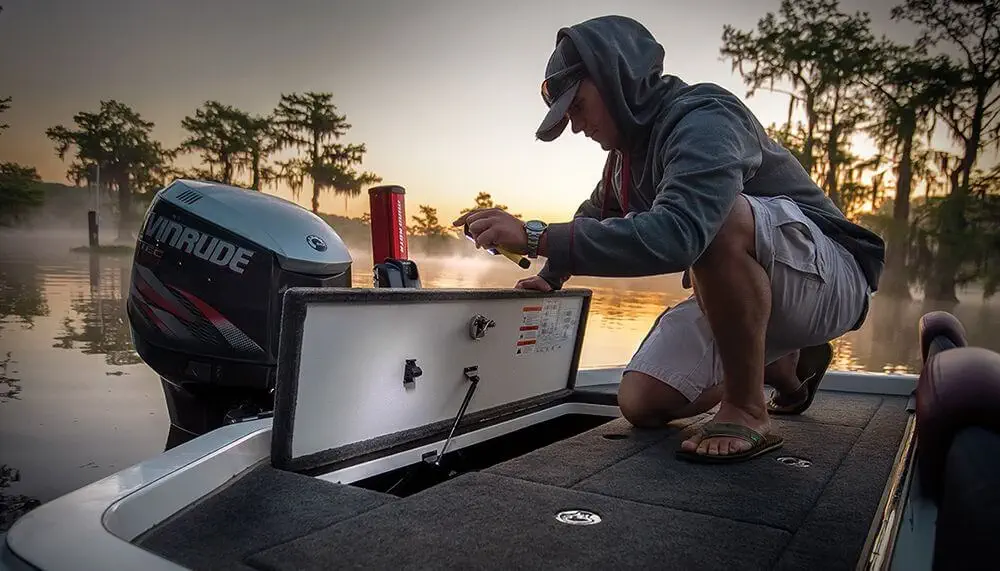
Boat Battery Maintenance: Ensuring Long-Term Performance
To make sure your marine battery lasts a long time, steer clear of extreme hot or cold. Store it near 59°F if you can. Keep it away from places that are freezing or too hot. Dirt can hurt your battery, so keep it clean. Always charge it up before you put it away. Try to charge it every few weeks, so it stays ready to go. A trickle charger is a handy tool for this, especially for lead-acid batteries. They don’t like to be empty. LiFePO4 batteries are tougher; they can go all the way down and still work. But, to keep them best, don’t use more than 80% of their energy.
For other batteries like lead-acid, gel, or AGM, don’t let them get too full or too empty. Charging too much or too little is bad news. It can make them too hot or cause other damage. Luckily, LiFePO4 batteries have smart systems inside that take care of charging for you.
Marine Battery Voltage: The Quick-Start Guide for Boaters
Quick Voltage Check
Before you set sail, it’s crucial to ensure your marine battery is ready to go. A simple look at your boat’s battery control panel can tell you the voltage, but if that’s not an option or you’re facing issues, grab a voltmeter. You’ll want to see numbers between 12.6 and 12.7 volts on a battery that’s not currently charging or hasn’t been charged recently.
Overnight Resting Test
For a true measure of your battery’s condition, let it rest. Turn everything off, let the battery sit untouched overnight, and check the voltage in the morning. This will give you the resting voltage and a clear picture of your battery’s health.
Accessing the Battery
To check the battery, you might need to find it first. It could be under a seat, behind a panel, or in a special compartment. If it’s hidden, your owner’s manual will guide you. Be cautious when you reach the terminals—red for positive, often with a cover, and black for negative. Never let anything metallic touch both terminals at once to avoid a short circuit.
Demystifying Marine Battery Sizes
When it comes to marine battery sizes, understanding the basics is key. The battery group size, as defined by the Battery Council International (BCI), encompasses dimensions like length, width, and height. This chart serves as an industry standard, making it easy to identify the exact size of a battery, regardless of the manufacturer. By choosing a specific group size, such as group 24, you ensure compatibility with your vessel’s battery compartment.
Associating group sizes with amp hours is another crucial aspect. For instance, comparing a group 24 battery with a group 27 deep cycle battery reveals that the latter offers slightly higher amp hours. Typically, a higher group number corresponds to more amp hours, providing your boat with more power throughout the day, reducing the risk of being stranded due to inadequate battery capacity.
When it comes to marine applications, keep an eye out for batteries with the letter “M” in their group size designation. These batteries are purpose-built for watercraft use. It’s essential not to use a battery without the “M” designation for your boat, as its internal construction won’t be suitable for prolonged marine use, leading to premature battery decline.
Customizing your boat’s power supply is another consideration. While battery trays limit size options, you can upgrade your tray to accommodate larger batteries. Pay attention to ensure that nothing gets pinched or obstructed when making these modifications. It’s important to note that there are two main types of marine batteries: cranking and deep cycle. Always replace a battery with the same type to ensure proper functionality.
For added power and flexibility, consider using a dual-purpose battery. Unlike cranking or deep-cycle batteries, dual-purpose batteries are designed to support marine accessories such as fish finders, fishing scales, and radios. By offloading these accessories onto a separate battery, you can allocate the primary batteries’ power to essential engine operations, reducing strain and extending battery life.
When to Replace Your Marine Battery
Knowing when to get a new marine battery helps keep your boat running smoothly. For a lead-acid battery, always check the water level. You might need to top it off with distilled water often, especially if you sail a lot. Look out for rust and keep the battery clean. If you let it lose too much power, or if it leaks or looks odd, it’s time for a change. Lead-acid types can be dangerous if they break, so replace them quickly. With good care, these batteries can last up to 5 years.
But, if you choose a lithium marine battery, you won’t have these troubles. They don’t need the same upkeep and are safer without toxic stuff inside. They also last much longer, usually 8 to 10 years, but sometimes even more! If you see your lithium battery slowing down, that’s your cue to get a new one. This way, your boating adventures never have to pause for long.
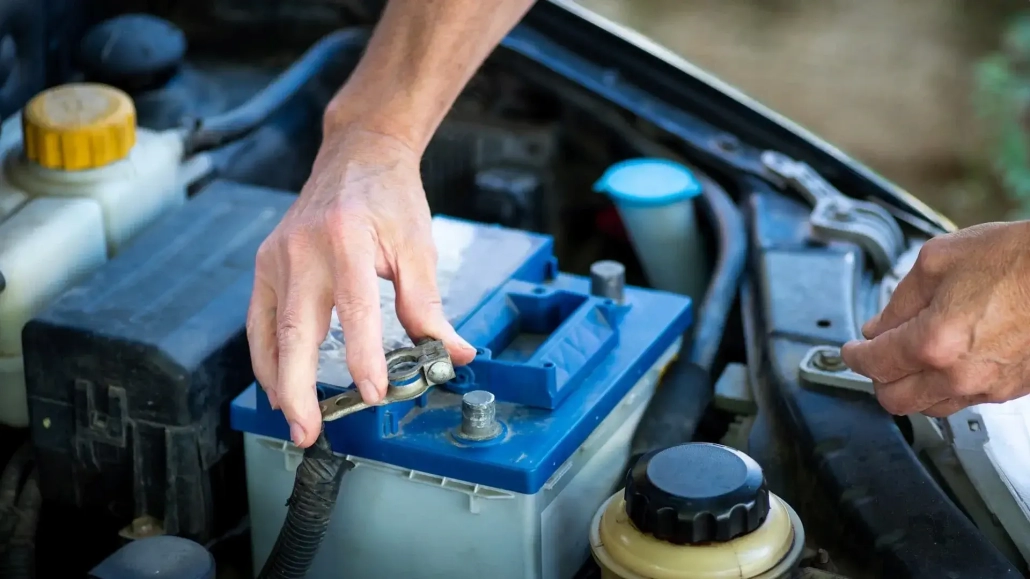
The Right Way to Charge Your Marine Battery
Leaving your boat plugged in is okay if you have a smart charger. It stops charging once the battery is full. But, if you’re not going to sail for a bit, a trickle charger is smart. It gives just enough power to make up for what the battery loses as it sits. That way, when you come back, your marine battery is ready to go.
Cold-Weather Marine Battery Care
When winter rolls in, think about taking your marine battery out of the boat. This keeps it away from the bitter cold. You can hook it up to a trickle charger more easily at home. But if your battery is one of the tough ones, and you unplug it, it can handle cold down to -15F. If it gets colder than that, you’re better off taking the battery out. Just make sure it’s disconnected right, either with a switch or by taking the wires off.
Keep Your Marine Battery Lasting Longer
Protecting Against Shakes and Bumps
First off, your marine battery needs a smooth ride. Even though you might not feel it, your boat is constantly shaking from the engine and waves. These shakes can hurt your battery. Make sure you put your battery on something soft, like rubber mats, and keep it strapped down tight. This way, it stays safe from all the moving around and any accidental knocks from tools.
Managing Temperature Ups and Downs
Batteries don’t like being too cold or too hot. If it’s chilly, they have to work harder, and if it’s hot, they wear out faster. The best spot for them? Somewhere that feels like a comfortable room. If it’s winter, give them a bit of warmth; if it’s summer, let them chill with some cool air or a fan.
Charging the Right Way
Using a smart charger is key for your marine battery. These chargers know just how much energy your battery needs and when to stop, so your battery doesn’t get tired too quickly. And, if it’s cold or hot, a temperature probe helps make sure your battery isn’t under or over-filled with power.
Using Batteries Properly
Remember, different batteries have different jobs. Some are for starting your boat’s engine, and others are for when you’re out at sea for a long time. Using them the wrong way can cause trouble, so pick the right battery for what you need.
Storing with Care
When you’re not using your battery, keep it fully charged and disconnected from things that might drain its power. Put it somewhere cool and aired out. With the right charger, it’ll be ready to go when you are.
Regular Check-Ups
Lastly, looking after your battery is like taking care of a pet. If it’s the kind with liquid inside, check it and fill it up with clean water when needed. Keep the ends clean, watch the temperature, and always keep it charged.
By following these easy tips, your marine battery should stay strong for all your sea adventures.
Is Upgrading to a Lithium Marine Battery Worth It?
Upgrading to a lithium marine battery is a wise choice for any boater. Not only will it cut down on constant fixes, but it will also outlive many cheaper batteries. This means saving cash and fewer headaches in the long run. Plus, switching from a lead-acid to lithium is a breeze and won’t hurt your boat. So, for a smoother sail, a lithium upgrade is the way to go. It’s a smart move now that pays off later.
Choose Lasting Power: MANLY Marine Batteries
The Powerhouse Trio for Your Boat
When you’re sailing, you want to know that your boat’s batteries will go the distance. MANLY Battery, a titan in battery manufacturing for over 13 years, presents three robust options to keep you afloat: the 12v, 24v, and 48v 100Ah marine lithium batteries. At MANLY, we prioritize individual needs. Our bespoke battery services offer unmatched customization opportunities, spanning voltage, capacity, aesthetics, and more, ensuring each product aligns perfectly with client specifications.
12V 100Ah Marine Lithium Battery
For the casual boater, the 12V 100Ah marine lithium battery packs enough punch to power your marine adventures efficiently. It’s a compact powerhouse that ensures your smaller electronics and essentials stay on.
Uncompromising Power and Safety
Experience the unrivaled power of a battery designed for the rigorous demands of the marine environment. The 12V 100Ah battery promises long-lasting energy output, all the while ensuring your safety with built-in features to protect against overcharging and overcurrent, crucial for the unpredictable nature of marine voyages.
Tailored Performance
Understanding that no two voyages are the same, MANLY batteries are customizable to fit specific marine needs. Whether you’re navigating quiet rivers or facing the open sea, the 12V 100Ah lithium battery offers the flexibility to meet varied power requirements, from solar energy storage to critical navigation systems. 
24V 100Ah Marine Lithium Battery
Upgrade to the 24V 100Ah marine lithium battery for larger boats or longer trips. It’s designed to provide that extra bit of energy, guaranteeing your onboard equipment runs smoothly for an extended period.
Durability for the Deep Blue
Echoing MANLY’s commitment to lasting quality, this battery is designed to endure the harshest marine environments. It operates within a temperature range of -20°C to 75°C (-4°F to 167°F), ensuring dependable performance no matter the weather or water conditions.
Energy Efficiency on the Waves
In a market where efficiency is king, the MANLY 24V 100Ah battery reigns supreme with an impressive 98% energy efficiency rate. This advantage allows for quicker charging and reduced energy consumption, making it a superior alternative to conventional lead-acid batteries.
48V 100Ah Marine Lithium Battery
For those who demand nothing but the best, the 48V 100Ah marine lithium battery from MANLY delivers. It’s tailored for the rigorous demands of the sea, offering top-notch performance and resilience.
Global Standards of Excellence
MANLY’s commitment to excellence is reflected in the global certifications its products carry, including UN38.3, IEC62133, UL, and CE. These certifications are a testament to the battery’s compliance with international safety and quality standards, ensuring you are powering your boat with a product recognized for its world-class capabilities.
Tech-Forward Marine Energy
The battery enhances user experience with modern features like Bluetooth connectivity for easy monitoring and an intuitive display for battery levels, bringing convenience and technological sophistication to your fingertips.
MANLY: Where Quality Meets Quantity
MANLY doesn’t just supply power; they supply confidence with over 3,000 batteries assembled daily in their state-of-the-art 65,000 square meter facility. Their batteries aren’t just about energy; they’re about safety, efficiency, and versatility, catering to a variety of applications – all with a decade-long warranty. With a remarkable energy efficiency rate of 95%, MANLY batteries are designed to outperform, ensuring that the question ‘How Long Do Marine Batteries Last?’ becomes a testament to endurance rather than a concern.
Conclusion
In the quest for unbroken horizons and tranquil seas, the role of the marine battery emerges as both the compass and the anchor. Concluding our journey through the realms of boat battery care, types, and charging wisdom, we are reminded that the essence of seamless sailing is as much about preparation as it is about the adventure itself. Whether you’re drawn to the whisper of the winds or the lure of the waters, the health of your marine battery is the undercurrent that propels you forward. With the right knowledge and a vigilant eye, your marine battery can be both a faithful companion and a reliable workhorse, safeguarding your moments of marine tranquility. As you dock from this educational voyage, carry with you the assurance that with proper care and the occasional check, your marine battery will serve as a sturdy bridge between the joy of now and the promise of many tomorrows.

